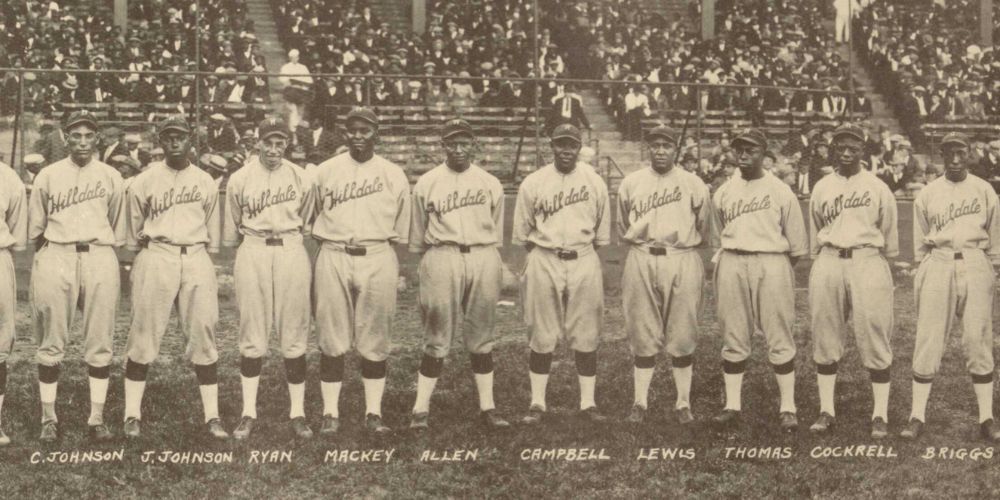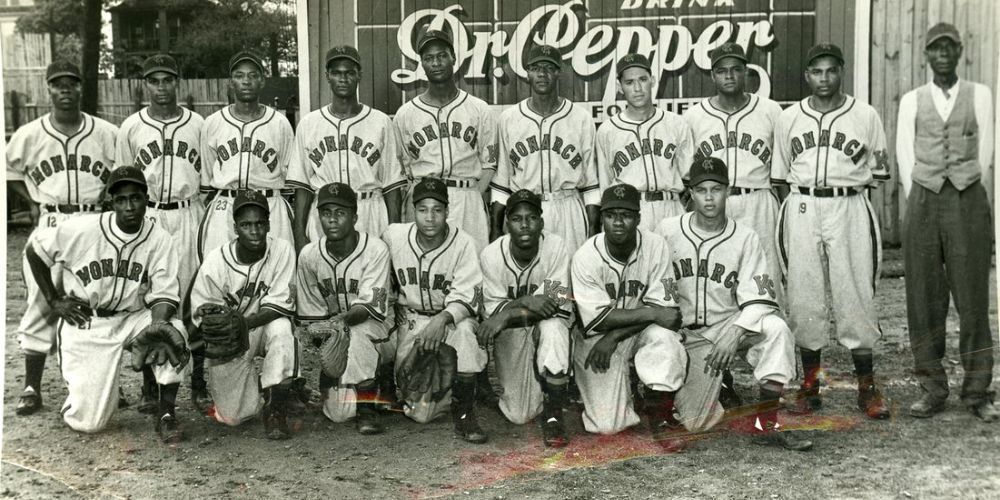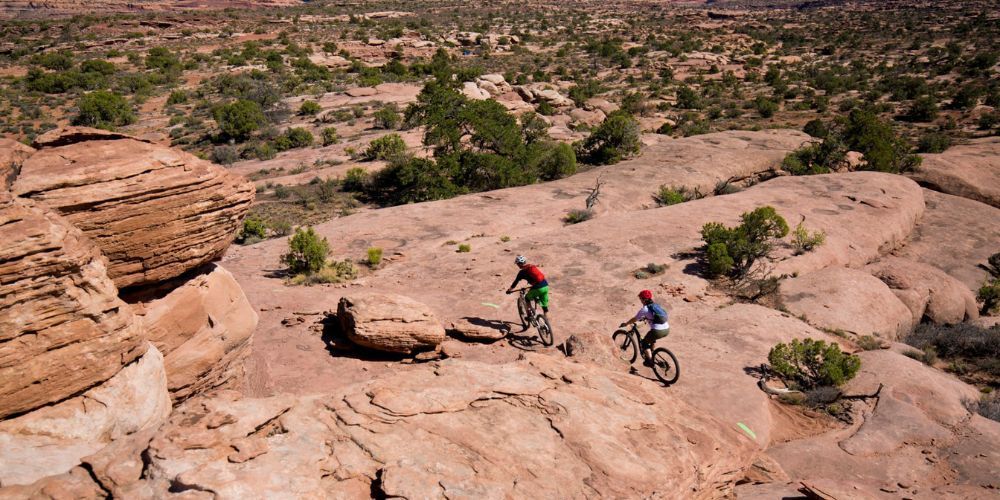Exploring Negro League History: The Pioneers of African-American Baseball
June 19, 2024
The Negro League, formed in response to racial segregation in professional baseball, gave a platform for talented African American players who were previously barred from participating in Major League Baseball. From the Cuban Giants' establishment in 1885 to Rube Foster's founding of the Negro National League in 1920, these leagues marked significant milestones in black and baseball history. These leagues weren't just home to games; they were brave stands against discrimination, underlying testaments to a fight for equality that transcended sports. Shaping the landscape of baseball would be an understatement; these leagues rewrote it! Get set for a journey into an important part of baseball's story.
The Negro Leagues were vital in providing opportunities for African American baseball players during a time of segregation in the United States. Formed in the 1920s, these leagues showcased immense talent and resilience, paving the way for desegregation in professional baseball.

The Roots of the Negro League
The story of the Negro League is one of resilience, perseverance, and passion for the game. It was born out of a stark reality – racial segregation in professional baseball. For decades, talented black players were systematically excluded from participating in the Major Leagues simply because of the color of their skin. This injustice led to the formation of what became an iconic symbol of determination and unity in sports history.
The roots of the Negro League can be traced back to the late 1800s when African-American players began to organize and compete independently. Despite facing countless obstacles and discriminatory regulations, these players displayed exceptional skill, love for the game, and unyielding determination. As early as 1885, the Cuban Giants, the first known organized black baseball team, emerged. This marked a significant milestone in the journey towards establishing a platform for African-American players to showcase their talents on a national stage.
The success and popularity of the Cuban Giants inspired the creation of more teams and leagues across different regions. Black players formed their own units and traveled extensively, challenging other teams while captivating audiences with their exceptional athleticism and sportsmanship.
Rise of Structured Leagues
The turning point came in 1920 when Andrew 'Rube' Foster, a visionary figure in African-American baseball, laid the foundation for what would become a groundbreaking development – the establishment of the Negro National League (NNL). Foster's tireless efforts paved the way for a structured and formalized league exclusively dedicated to black players. This seminal moment marked a new era in which African-American athletes could compete at a professional level without facing discrimination or exclusion based on race.
In fostering the NNL, Rube Foster created an environment where black players could thrive and showcase their remarkable talents without being shackled by barriers rooted in racism. Consequently, this pivotal move not only provided ample opportunities for black athletes but also brought black baseball to major urban centers and rural areas across the United States, Canada, and even Latin America.
The formation of the Negro National League not only represented a monumental breakthrough for black baseball but also served as an emblem of courage, unity, and unwavering resolve amidst adversity.
In this high-stakes narrative where challenges loomed larger than life itself, the emergence of organized black baseball teams set the stage for a transformational period in American sports history—a time that witnessed bold strides towards equality on the diamond.
Early Days of Professional African American Baseball
The late 1800s marked the emergence of African Americans in organized baseball. Moses Fleetwood Walker and Bud Fowler were pioneers who challenged racial barriers, clearing the way for more African American players to enter professional baseball. Despite facing immense racism, they persevered, playing on various teams and sparking a new era for black baseball.
Amidst adversities, Black players established their own units and barnstormed across the country, showcasing exceptional skill and love for the game. Their resilience dispelled societal notions of inferior athleticism, gaining recognition for their incredible abilities and laying the foundation for a rich history in black baseball.
In 1920, under Andrew "Rube" Foster's visionary guidance, the Negro National League (NNL) was established—a significant milestone in African American sports history. This move provided a platform for talented black ballplayers to compete at a professional level, bringing cohesion and structure to black baseball previously unattainable due to systemic segregation in mainstream sports.
The NNL's establishment not only allowed more opportunities for African American players but also brought black baseball to major urban centers and rural areas across the United States, Canada, and Latin America. This fostered a sense of unity among Black ballplayers and enthusiasts alike.
Rival leagues soon emerged in Eastern and Southern states, further advancing professional opportunities for African American players while galvanizing communities around an exciting brand of sport that had long been overlooked.
The Kansas City Monarchs' immense support led local Black Churches to shift their Sunday service time back by an hour so that fans could attend the games, underscoring the deep connection between black communities and their fervent support for the teams representing them on the field.
The impact of segregation on the Negro League is an essential aspect that affected its growth and legacy. Let's now turn our attention to how segregation shaped the journey of black baseball in the United States.
Segregation's Impact on the Negro League
Segregation cast a dark cloud over the early days of American society. It divided communities, perpetuated deep-rooted injustice, and profoundly impacted the world of sports. In the case of baseball, segregation within Major League Baseball compelled African American players to form their own leagues as they were prohibited from playing with white athletes due to their race.
The creation of separate black baseball leagues, known as the Negro Leagues, in response to segregation was both a mark of resilience and a response to inequality—a beacon of hope in a landscape rife with discrimination. These leagues not only provided opportunities for black players to display their incredible talent but also served as platforms for social and economic upliftment within African American communities across America. The necessity of forming their own league revealed not only the barriers faced by black players but also showcased their determination and skill.
Players like Satchel Paige, Josh Gibson, Cool Papa Bell, and Jackie Robinson (who later broke the color barrier in Major League Baseball) demonstrated remarkable athletic ability and brought immense excitement to the sport. It was through the dogged determination of these players that black baseball continued to thrive despite the hardships imposed by segregation.
Beyond the playing field, these leagues fostered a sense of community pride and unity among African Americans, providing them with a source of joy and inspiration during an era characterized by racial inequality and social strife.
The formation of the Negro Leagues, therefore, stands as a testament to the unwavering spirit and perseverance of African American athletes in the face of adversity.
The legacy of the pioneers who battled against racial barriers on the baseball diamond paves the way for a closer look at some of the most remarkable players and teams in Negro League history.
Noteworthy Players and Teams
The Negro Leagues showcased an array of exceptional talent. Despite racial segregation, players like Satchel Paige, Josh Gibson, Buck Leonard, and Cool Papa Bell defied all odds to become icons of African-American baseball. Their extraordinary skills and achievements catapulted them to legendary status within the league and beyond.
Satchel Paige's Remarkable Career:
- Inducted into the Baseball Hall of Fame in 1971.
- Held the record for the oldest rookie in Major League Baseball at 42 years old.
- Renowned for his wit and wisdom, encapsulated in "Paige's Rules" which conveyed his unique approach to life and baseball.
Satchel Paige was a pitching marvel and a major draw for fans due to his charismatic style and incredible speed on the mound. His notorious "hesitation pitch" baffled batters and solidified his reputation as one of the most dominant pitchers in baseball history.
Josh Gibson's Impact:
- Established an impressive reputation within the Negro Leagues as well as international renown during exhibitions in Latin America.
- Elevated to legendary status with comparisons to Major League Baseball's greatest players.
Josh Gibson, known as the "Black Babe Ruth," was renowned for his awe-inspiring power at the plate, reflecting an unparalleled hitting prowess that earned him a distinguished place in baseball lore.
Aside from individual stars, several teams flourished within the Negro Leagues, leaving an indelible imprint on baseball history. The Kansas City Monarchs, Homestead Grays, and Birmingham Black Barons were among the most celebrated franchises in this era.
Legendary Teams of the Negro Leagues:
Kansas City Monarchs
- Notable for nurturing the talents of numerous future Major League stars.
- Under the leadership of J.L. Wilkinson, the Monarchs attained widespread acclaim for their exceptional play and impact on African-American communities.
Homestead Grays
- A powerhouse team led by owner Cum Posey and featuring stellar talent such as Josh Gibson and Buck Leonard.
- Dominated the Negro National League, capturing multiple championships and earning recognition as one of the most successful franchises of its time.
These players exemplified extraordinary talent and sportsmanship while confronting formidable racial barriers, inspiring future generations with their resilience and dedication to the game. These revered teams not only excelled on the field but also served as pillars of unity within African-American communities. Their triumphs transcended sports, instilling pride and hope during a challenging period in American history.
The enduring legacy of these players and teams continues to inspire a profound appreciation for African-American baseball history, underscoring its pivotal role in shaping American sports culture.
Signature Games in Negro League History
Signature games in the history of the Negro Leagues were not just displays of athletic prowess; they were significant milestones that showcased the talent, resilience, and determination of African-American baseball players. These events didn't just draw large crowds but also made bold statements about the exceptional abilities of Black athletes during a time of widespread racial segregation in professional sports.
The Negro League World Series notably stands out among these signature events. Similar to the Major League Baseball (MLB) World Series, this championship series marked the culmination of a season-long battle for supremacy. Teams from different leagues fiercely competed, offering thrilling matchups and high-stakes drama that rivaled any other sports event of the time.
This historic series not only brought together the best black baseball players in a showcase of extraordinary skill but also captured the hearts and minds of fans. The fierce competition and undeniable talent on display helped shatter prevailing perceptions and stereotypes about African-American athletes, earning respect and admiration from communities across the country.
Another iconic event was the East-West All-Star Game, an annual exhibition contest showcasing top talent from two divisions within the Negro Leagues. Held at prominent venues such as Comiskey Park in Chicago, this game drew enormous crowds and garnered widespread attention, cementing its status as a must-see event for sports enthusiasts.
The game not only provided an exciting display of athletic ability but also served as a celebration of African-American culture and achievement. It became a platform for talented players to exhibit their skills, claim their place in history, and challenge discriminatory norms prevalent in mainstream professional baseball.
The significance of these signature games lies not only in their sporting appeal but also in their role as catalysts for social change. They symbolized a forceful assertion of Black identity and unity at a time when racial segregation and discrimination were deeply entrenched in American society.
These games transcended mere athleticism; they were pivotal moments that contributed to breaking down racial barriers, paving the way for greater inclusion and diversity in professional sports. The stories emerging from these historic contests have become enduring symbols of courage, resilience, and triumph over adversity.
Now, let's shine a light on the downturn and disbandment of the Negro League – an era marked by challenges and transformations that would significantly impact African-American baseball.

The Decline and Disbandment of the Negro League
The integration of Major League Baseball with Jackie Robinson breaking the color barrier in 1947 marked a significant turning point in American sports history. While it was a monumental step towards racial equality, it set off a series of events that signaled the beginning of the end for the Negro Leagues.
Before integration, the Negro Leagues were vibrant, prestigious organizations boasting remarkable talent and showcasing thrilling competition, garnering tremendous popularity and support from African-American communities nationwide. However, as black players joined Major League teams, the allure and prominence of the Negro Leagues gradually waned. Integration led to a mass exodus of top-tier talent from the Negro Leagues to Major League Baseball, significantly eroding their strength and appeal.
The departure of star players and escalating financial challenges took a heavy toll on the sustainability of the Negro Leagues. Consequently, teams struggled with declining attendance, leading to financial instability. During this tumultuous period, many franchises were forced to fold or became financially unviable, resulting in the disbandment of several iconic baseball organizations.
The economic impact on Negro League teams and players following integration was profound. Financial difficulties not only affected team operations but also had a direct effect on players' livelihoods. With declining revenues and limited opportunities for players in integrated leagues due to racial discrimination, many former stars faced economic hardship after their transition from the Negro Leagues.
For instance, once Jackie Robinson made his debut in Major League Baseball, many talented players such as Willie Mays, Hank Aaron, and Ernie Banks followed suit, depleting the talent pool of the Negro Leagues. As a result, numerous teams disbanded or faced insurmountable challenges that ultimately led to their downfall.
This intricate web of circumstances surrounding integration and its impact on both the players and teams within the Negro Leagues paints a somber picture of how this pivotal moment in history brought about an irrevocable transformation in African-American baseball community.
The dire repercussions of integration deeply altered the landscape of African-American baseball.
Enduring Legacy and Influence of the Negro League
The influence of the Negro League extends beyond baseball diamonds, weaving itself into the fabric of American history. The struggle and triumph of these remarkable athletes resonate far beyond their years, shaping not only the sports landscape but also serving as a beacon of inspiration for social progress and racial equality in our society.
Their courage and talent have not only paved the way for diverse representation in professional baseball but have also left an indelible mark on social justice movements, becoming symbolic figures in the ongoing fight for equality. The stories of these trailblazers act as a reminder that anything is possible with unwavering dedication and tenacity in the pursuit of one's dreams, transcending time to touch generations to come.
In today's game, we witness the legacy of the Negro League being honored through various means – from annual commemorations and events dedicated to celebrating their contributions, to awards established in their honor. These initiatives are pivotal in ensuring that their collective sacrifice, skill, and spirit will forever hold a place at the heart of baseball.
Embracing this historical foundation elevates awareness about the struggles and achievements of these extraordinary players and channels their legacy into actions that foster inclusion, diversity, and equitable representation—values that resonate deeply with modern audiences and stand as timeless principles for society at large.
It's undeniable that the essence of the Negro League stands as a beacon, shaping the very core of today's baseball landscape by inspiring change, goodwill, and unity among people from all walks of life.
The enduring legacy of the Negro League continues to ignite passion and awareness, reminding us that from adversity can emerge triumph and from struggle can arise progress. Their impact on sports and society embodies the resilience and determination of those who strive for lasting change.
What were the Negro Leagues?
The Negro Leagues were a series of professional baseball leagues in the United States that were organized primarily for African American and Latin American players. These leagues emerged due to the racial segregation policies of the early 20th century, which barred Black players from participating in Major League Baseball (MLB). The Negro National League (NNL), founded in 1920 by Andrew "Rube" Foster, was the first stable and financially successful Negro League. It provided a structured and competitive environment for Black players, who were otherwise excluded from the mainstream professional leagues. Over time, other leagues such as the Eastern Colored League and the Negro American League were also formed, creating a rich and competitive baseball culture parallel to the MLB.
Who were some of the most famous players in the Negro Leagues?
The Negro Leagues were home to many outstanding athletes who showcased incredible talent and skill. Some of the most famous players include:
- Satchel Paige: Known for his extraordinary pitching ability, Paige had a career that spanned five decades. His charisma and longevity made him one of the most recognizable figures in baseball.
- Josh Gibson: Often referred to as the "Black Babe Ruth," Gibson was a powerful hitter and a stellar catcher. He is believed to have hit almost 800 home runs during his career, though official records vary.
- Cool Papa Bell: Renowned for his speed, Bell was considered one of the fastest players in baseball history. His base-stealing prowess and defensive skills in center field were legendary.
- Buck Leonard: A first baseman with a powerful bat, Leonard was a cornerstone of the Homestead Grays alongside Josh Gibson. He was known for his consistent hitting and leadership.
- Oscar Charleston: Often regarded as one of the greatest all-around players, Charleston excelled in batting, fielding, and base running. His versatility and competitive spirit made him a standout star.
How did the Negro Leagues impact Major League Baseball?
The Negro Leagues had a profound impact on Major League Baseball, primarily by demonstrating the high level of talent among African American players and challenging the racial segregation of professional sports. The breaking of MLB's color barrier by Jackie Robinson in 1947 was a direct result of the success and pressure from the Negro Leagues. Robinson's entry into the MLB with the Brooklyn Dodgers marked the beginning of the end for segregation in professional baseball and paved the way for other Black players to join the major leagues. This integration significantly enriched the talent pool and competitive nature of MLB, transforming the landscape of American sports and society. Moreover, the Negro Leagues highlighted the injustices of segregation, contributing to the broader civil rights movement.
Why did the Negro Leagues decline and eventually fold?
The decline of the Negro Leagues began with the integration of Major League Baseball. As MLB teams started signing African American players, the top talent from the Negro Leagues was absorbed into the major leagues, leading to a decrease in the quality of play and fan interest in the Negro Leagues. Jackie Robinson's success inspired other MLB teams to recruit Black players, further depleting the Negro Leagues' talent pool. Additionally, the economic model of the Negro Leagues, which had relied on drawing large crowds to see star players, became unsustainable. By the early 1960s, with most top players having joined MLB and fan support waning, the Negro Leagues could no longer operate profitably and effectively ceased to exist.
How are the Negro Leagues remembered and honored today?
The legacy of the Negro Leagues is preserved and celebrated through various means. The Negro Leagues Baseball Museum in Kansas City, Missouri, serves as a central repository of Negro Leagues history, showcasing memorabilia, exhibits, and educational programs. This museum helps keep the stories and achievements of Negro League players alive for future generations. Additionally, many former Negro League players have been inducted into the Baseball Hall of Fame, recognizing their contributions to the sport. In 2020, Major League Baseball announced that it would officially recognize the statistics and records of Negro League players as part of the major league record, acknowledging their rightful place in baseball history. Various books, documentaries, and films have also been produced, providing detailed accounts of the players and teams that made the Negro Leagues special. Annual events and tributes, such as Negro Leagues commemorative games and ceremonies, further honor the enduring legacy of these pioneering athletes.
Check out the latest reviews on baseball gear
Author: William Flaiz
All Rights Reserved | Sports and Nature Gear










